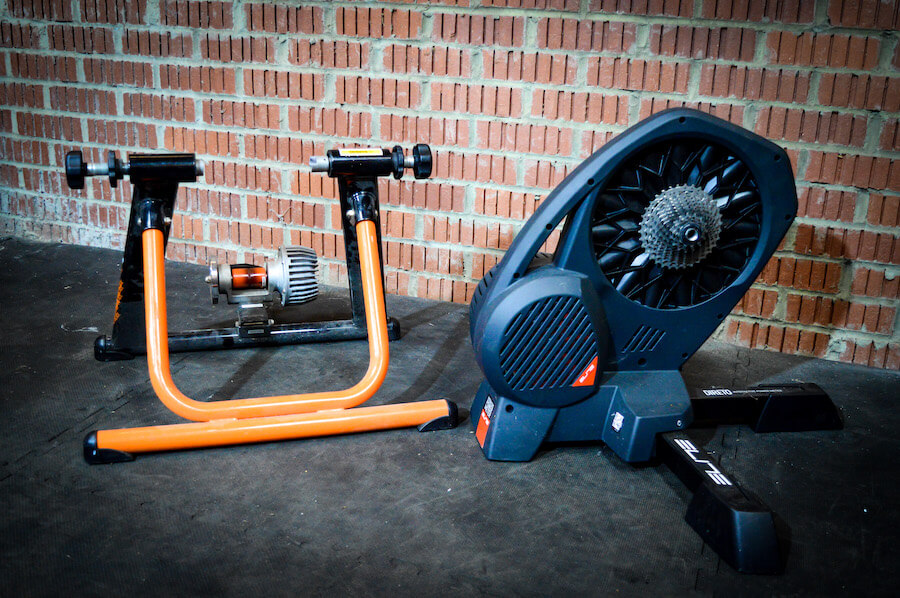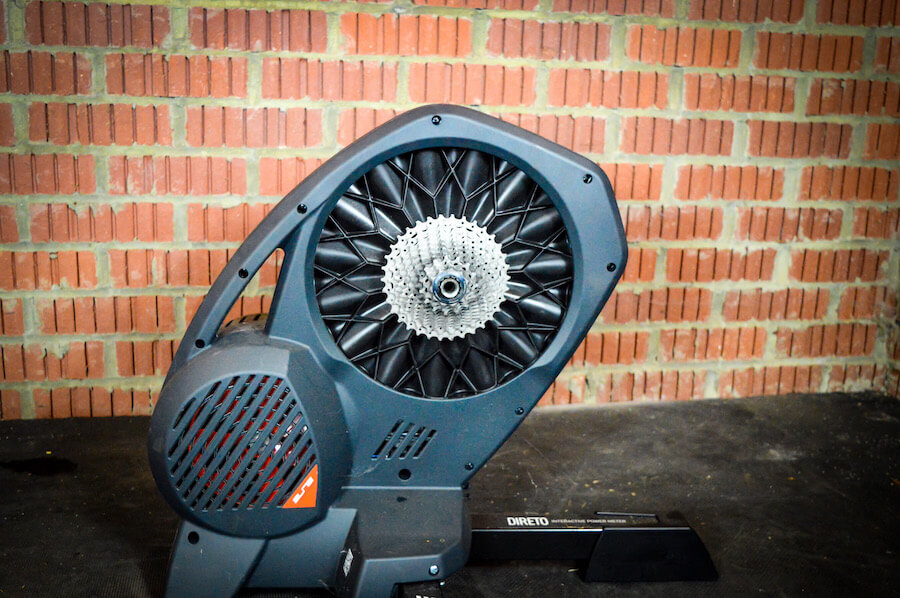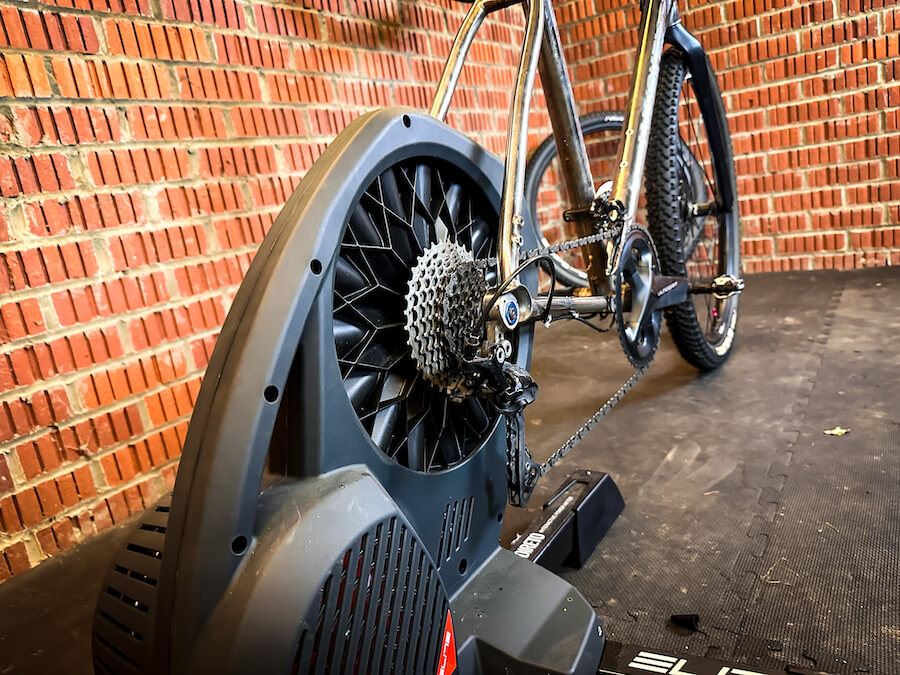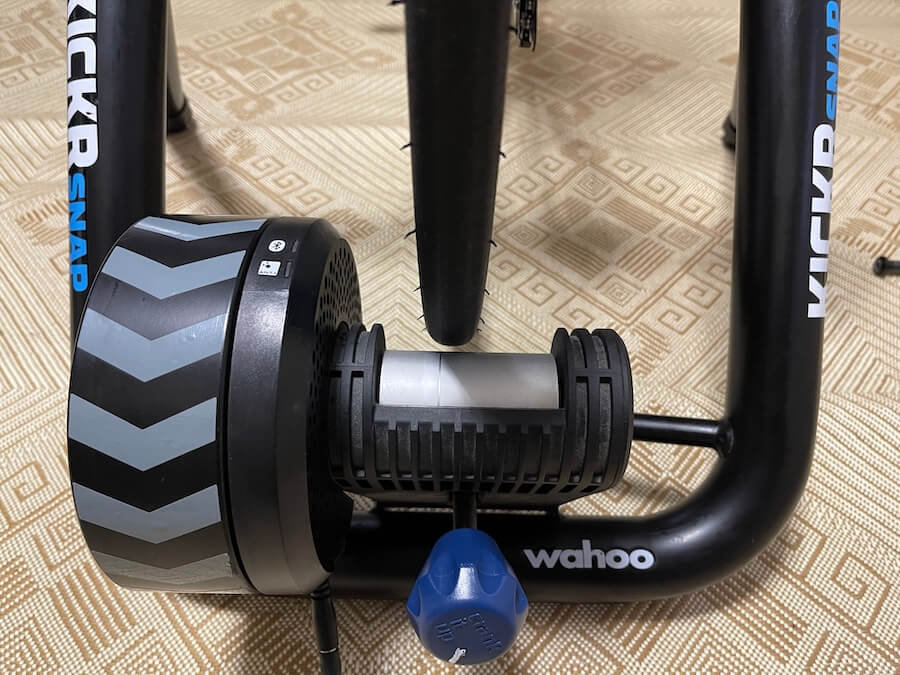Intro
Have you noticed lately that most of your cycling friends aren’t out riding on the roads and enjoying the fresh air and scenery? OK, so I might be kinda joking, but in all honesty, the shift to riding your
Now, if you tell people that know nothing about cycling that you ride your
This article aims to help you understand:
- What is a direct and wheel-on trainer?
- What are the differences?
- What are the main features?
- Which one is the best for me? and
- A final verdict to help you make your choice
But the one question that cyclists ask, particularly beginners, is what type of indoor trainer is best for me? That’s right; there are two main types of trainers you’ll have to choose from; either a direct-drive indoor trainer or a wheel-on indoor trainer.

Quick Summary
In recent years the popularity of indoor
Long gone are the days of riding on your rollers which were loud, heavy, and downright dangerous; if you weren’t paying attention, you could fall off your
Now riders have access to all kinds of fancy apps like ZWift, Sufferfest, and TrainerRoad. All these apps let you ride in a virtual world with other riders in which you can ride solo, join a group ride, select a training program, or even join a race.
Comparison Table
| Direct-Drive Trainer | Wheel-on Trainer | |
|---|---|---|
| Esse of Use | No | Yes |
| Tire Slippage | No | Yes |
| Accurate Data | Yes | No |
| Calibration Required | No | Yes |
| Connectivity | BlueTooth | Bluetooth |
| Easy to Transport | No | Yes |
| Realistic Riding Feel | Yes | Yes |
| ConnectsThird-party Apps | Yes | Yes |
Direct Drive Trainer
To many of us in the cycling industry, direct-drive trainers are the pinnacle of indoor trainers. They are sometimes referred to as “smart trainers,” but in actual fact, wheel-on indoor trainers are also smart trainers.
Direct drive indoor

Ease of Use
In order to attach your
How difficult is it to hook up your
Now some cyclists say that direct-drive trainers are messy and take too long to set up, and I agree with that, but let’s be honest, they are the best trainers on the market, so spending some extra time to set your

Realistic Riding Experience
Once you’ve got your
Because the
The seat, handlebars, frame, and wheels are all the same, which is another reason why the

Accuracy of Data And Power
Direct-drive indoor trainers are, without a doubt, the most accurate of all the different types of trainers. Most are accurate to within +/- 2%, meaning they make the perfect trainer for cyclists who perform at an elite level and need to rely on the power data to design their training programs.
Couple the accuracy of the trainer together with being able to link your cadence, speed, power, and even heart rate sensor, and you have an excellent and accurate training experience.
It’s great to ride hard and then look down at your ride data knowing the metrics are accurate and you don’t require guesswork anymore.
Price and Affordability
Direct drive trainers will burn a big hole in your wallet, so you need to be a hard-core cyclist to fork out thousands of dollars. Before spending your hard-earned cash on a direct-drive trainer, you should ensure you’re a dedicated and experienced cyclist. Otherwise, your best option might be to choose a wheel-on trainer, which tends to be considerably cheaper.
However, once you have everything set up correctly, direct-drive trainers ride like a daydream. A direct drive trainer’s most significant advantage is its capability to reproduce a lifelike
Wheel On Trainer
Now when it comes to wheel-on indoor cycling trainers, I can speak from experience because I have been using the Wahoo Kickr Snap for the last four years (you can also read my detailed review of the Kickr Snap or check my setup in the video below). Wheel-on trainers are much cheaper than their direct drive counterparts and make the perfect device for those who are on a limited budget or new to the cycling scene.
While direct trainers are the cream of the crop, I have had no problems whatsoever with my wheel-on trainer, and let me tell you, it gets a daily workout over the long winter months.
Ease Of Use
One of the primary benefits of using a wheel-on trainer compared to a direct trainer is that you don’t need to take your back wheel and cassette off the
Many serious cyclists who attend races and big events love wheel-on trainers because they’re easy to transport and even easier to set up. If you’re a regular racer and travel to races, then I would highly recommend purchasing a wheel-on trainer to use for your warmup and cooldowns.
The ease of setting up the wheel-on trainers means that you can maximize your time efficiently and keep your much-wanted energy for the race and not a messy direct drive trainer.
Accuracy of Data And Power
Now when it comes to the accuracy of a wheel-on trainer, I can tell you from experience they fall far behind their direct-drive counterparts. Generally speaking, wheel-on trainers have an accuracy reading of anywhere from +/- 3% to +/- 5% depending on several factors like your power meter, the software on your trainer, and even your body weight and the quality of your
The other downside of the wheel-on trainers is that they need to be calibrated after each use. Now while this is very straightforward to perform and only takes a couple of minutes, it is a bit of a hassle. To be honest, I don’t calibrate my trainer after each ride; instead, I do it every couple of weeks or so.
Wheel-on trainers are known for their irregular power reading because your
The wheel on indoor trainers are also pretty noisy, but that’s to be expected because your

Price and Affordability
Let’s be honest, not every cyclist has the money to spend thousands of dollars on a direct drive trainer; I know I didn’t, which is precisely why I purchased a wheel-on trainer instead.
If you’re on a fixed budget, then the wheel-on trainer is your best option, and as I said, in my experience, they’re great little trainers, and I’ve had no issues whatsoever with my Wahoo Kickr Snap. There are several reputable brands on the market, so make sure you research before you spend your hard-earned cash.
Detailed Comparison: direct drive vs wheel on trainer
If you’re new to indoor cycling, then you probably have a few questions and concerns about which trainer is best for you and what the differences are between the direct-drive and wheel-on-drive trainers.
So in this section, let’s take a look at
- How do they work?
- Are they practical, and what about the noise?
- Price
- Technology and Apps
- Are Smart Bikes better than trainers?
So if you’re unsure about the main differences, this section will help clear that up so you can make a better and more informed choice.
How Do They Work?
Quite simply, a wheel-on trainer does as the name suggests, and you must “put” your
Generally speaking, with a wheel-on trainer, your front wheel sits squarely on the floor, but if you’re lucky, your brand might include a wheel holder that sits your front tire off the ground and helps to raise the
You then start pedaling, and the smart trainer will control the power and resistance that is mirrored on the screen from your favorite app, like ZWIFT or Sufferfest.
Although it sounds challenging to mount your
Direct-drive trainers are also slightly bigger and heavier, but that’s because they have to take the total weight of your
Are They Practical and What About The Noise?
So this question will depend on a couple of factors, and the most important one is how many people will be using the trainer? In my house, for example, my 12yo daughter also rides and uses the trainer, so in our case, it was easy to get a wheel-on trainer because it’s much easier and quicker to change bikes.
Also, with a direct drive trainer, not every cassette fits and is the same size, so it might mean that after you take your
When it comes to noise, there is no doubt that the direct drive is much quieter than the wheel-on trainer, so if you live in a small apartment, then you might want to consider that. However, with that being said, if you take good care of your
Price and Affordability
There’s no way around it, smart indoor
- Ride 365 days of the year, no matter how bad the weather
- They last a long time and
- The whole family can enjoy them
That said, direct-drive trainers are much more expensive than wheel-on trainers, typically twice as expensive in my experience. The price will also vary greatly depending on the brand and how much money you’re willing to spend.
As I said, I have the less expensive wheel-on trainer, which has been great for my family and me. My wheel-on trainer is getting a bit old, and I’m now willing to pay more now for the expensive direct-drive trainer.
If you’re limited on a budget, the wheel-on trainer will give you a great workout, but if you have some extra cash, then definitely get a direct drive trainer.
Technology and Apps
If you’re serious about getting an indoor
If you haven’t seen Zwift, I highly recommend trying to find a video because it’s so amazing how realistic they are. You can ride in races or group rides, choose from a training program, or ride solo if you like. Zwift is very affordable, and I only pay $10 per month, which is great for what you get.
Both wheel-on and direct-drive trainers are compatible with all the apps, which is valuable information for potential buyers.
The trainers connect to the app via BlueTooth (you can stream apps like Zwift even on your tv), making it seamless and, most importantly, quick. In fact, the apps and training program are so good that every professional cycling teams use the app to help track and monitor the progress of their riders. These apps let you track valuable ride data like power, cadence, speed, calories, distance, and even your heart rate zones.
Are Smart Bikes Better Than Trainers?

Ah, the latest technology is the Smart
Several brands have released smart bikes over the last couple of years, but many experts in the field, myself included, are not too impressed with the smart bikes. Smart bikes tend to be very expensive, and the technology needs plenty of work to catch up to the smart trainers.
At this stage, I would recommend against getting a smart
Which Trainer Is Best For Me?
When it comes to choosing the right trainer for you, it really comes down to two major points:
- Your budget and
- How serious a cyclist are you?
Do you live in a small apartment? Are others in the house going to be using the trainer? Direct-Drive trainers are quieter than wheel-on ones but only slightly so.
Another consideration is the size of your workout room. Wheel-on trainers are generally much smaller than direct drive, so the wheel-on trainer is the better option in this situation. At the end of the day, you have to make the choice that’s right for you.
Top Tip: Don’t spend your hard-earned money on an expensive indoor direct-drive smart trainer if you don’t need to. Learn how you can make your cheap, dumb trainer smart!
Verdict
Let me be honest; if you have the money and are the only one using the trainer, then your best bet is the direct-drive trainer. It offers the best feel, the ride is realistic, and the data that comes through is extensive and accurate.
That being said, there is nothing wrong with the cheaper wheel-on trainer, and as I said, my wheel-on trainer is still going strong after four and a bit years. Either way, you’ll stay fit, and that’s the most important thing!
Happy cycling!
